
There’s an Eichler in Our ‘Desired Future’
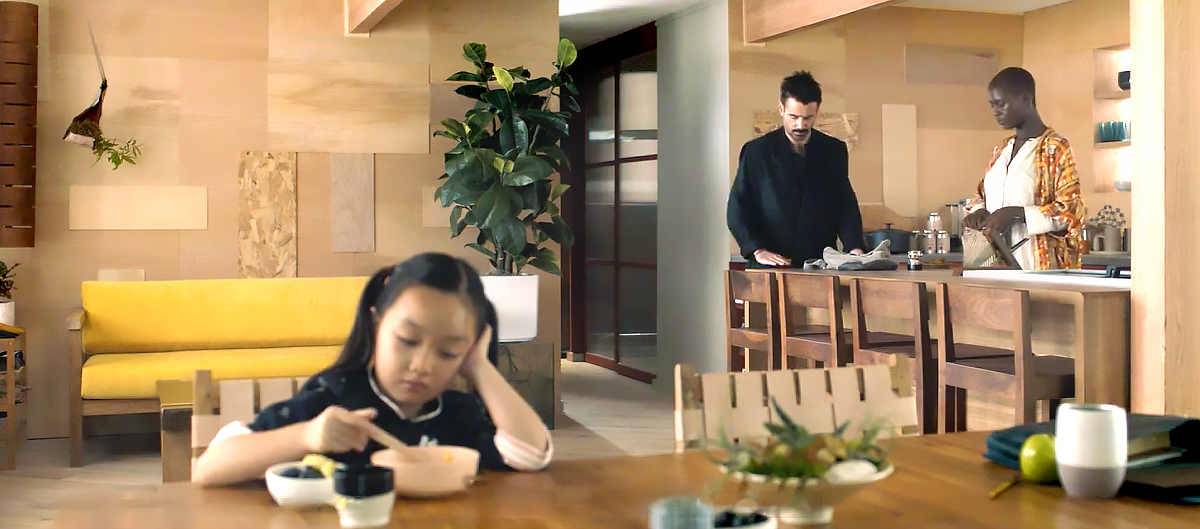 |
It’s happening some time in the future, not clear when, “a post-apocalyptic time,” says Alexandra Schaller, production designer for the film ‘After Yang,’ which hit theaters and started streaming March 4.
“Humanity has experienced some kind of calamity and has come up the other side,” she says. It’s a domestic tale the film’s director, Kogonada, tells, involving a family and their beloved but ailing 'techno-sapien' Yang, who is way more than a robot.
Kogonada, who goes by a single name, is a modern architecture buff whose first feature film, ‘Columbus,’ was set in an Indiana city famed for its modern buildings.
Is it surprising then, that for his second feature, Kogonada chose a modern tract home built by Joe Eichler to represent what critic Maria Gill says is the film’s “image of the desired future.”
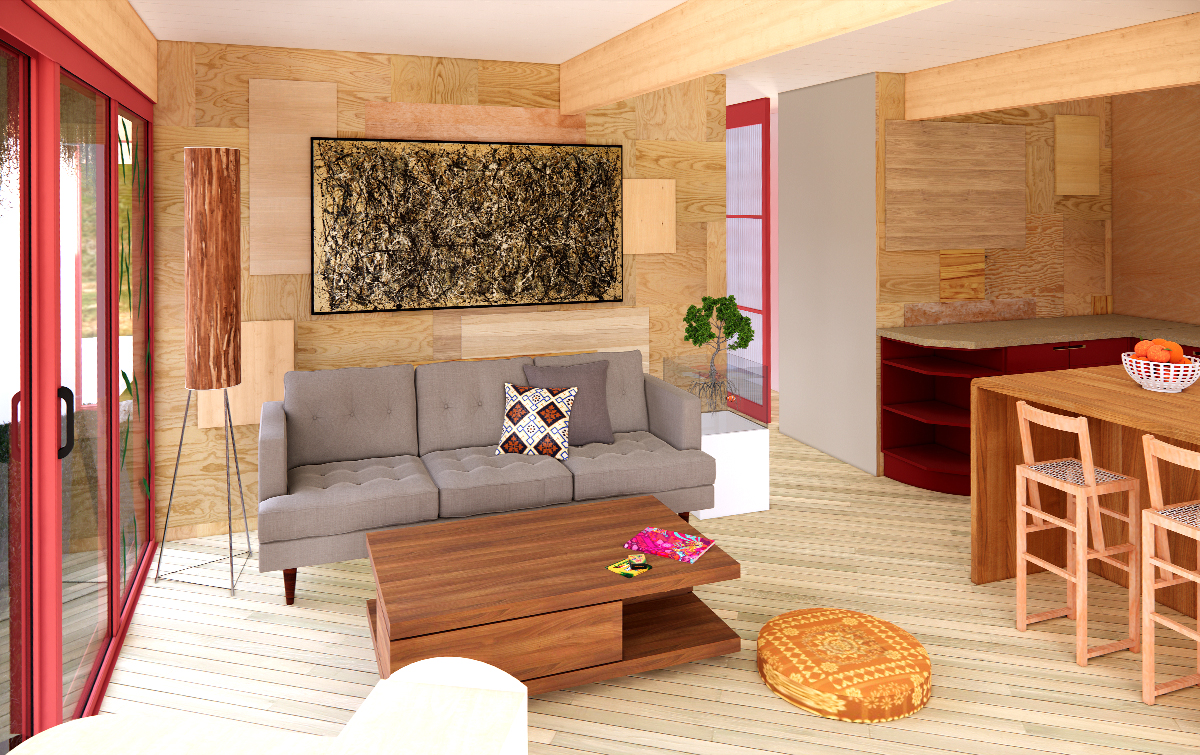 |
Maybe – if only because the film was shot not in California, where about 11,000 Eichler homes were built, but in upstate New York, where there are three, the only Eichlers outside California.
Why New York? Logistical reasons; it is an indie film center, says Schaller, a fan of modern (and other) design. And why an Eichler?
“We wanted a future that that felt relatable,” she says, adding later, “We really didn't want a future, that that was sort of overly slick and cool and cold.”
Yes, Schaller acknowledges, many films have used modern residences to represents the lairs of villains. Kogonada goes for the opposite. “It was inviting and cozy and warm and clean and functional,” she says of the home, where scenes take up about half of the screen time.
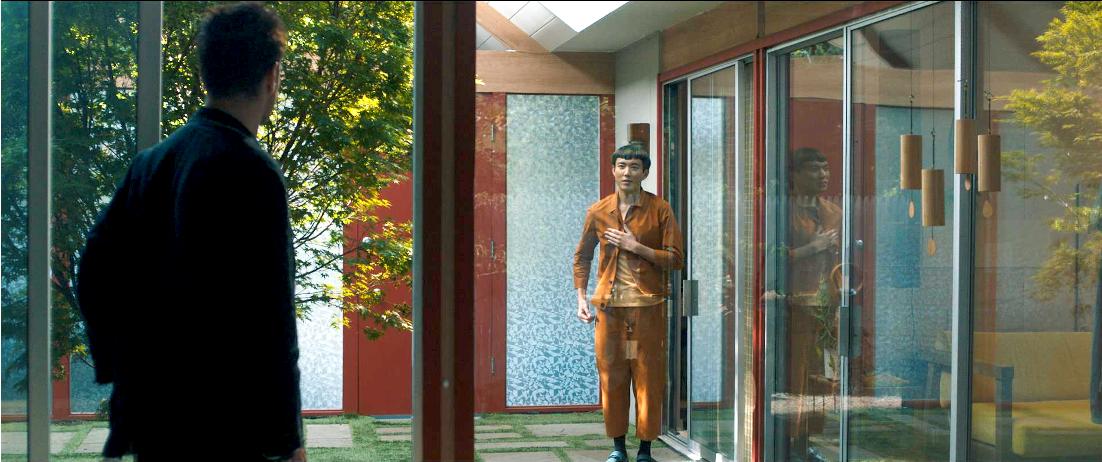 |
Over the years many commercials have been set in Eichlers, and a few features have used them too, most extensively ‘Cake,’ with Jennifer Aniston. It’s worth pondering, though, that the first feature to be so extensively use an Eichler was shot in New York, and not in Balboa Highlands, which is 40 minutes from Hollywood and Vine.
As production designer, the Brooklyn-based, London-educated Schaller says, she “designed and selected and curated…everything that you see on screen, with the exception of the clothes the actors are wearing.” She also helped select the Eichler.
“It was really important for Kogonada that the home in the movie feel like its own character. And so the identity of the house was very important,” she says.
She and the director helped scour upstate New York for a suitable house. Kogonada was inclined towards something Brutalist. “It's nihilistic,” she told him about that style of building. “I don't want our future to be in a nihilistic house.”
“‘K,’ as we called him, discovered that these Eichlers existed, because he loves architecture and knows so much about it. We were driving back from looking at other houses. And he said, ‘Hey, I think we're near that town where these Eichler are. Let's just drive by and take a look.’ ”
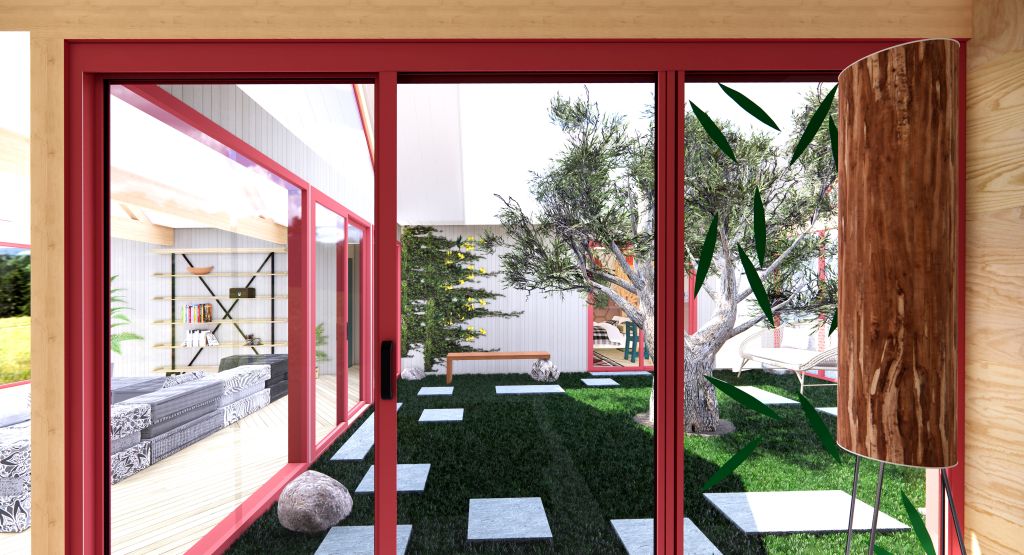 |
They knocked on a door. No one answered – but the door slid open, and they gazed into the atrium, also noticing that the house was unoccupied.
“So we thought, 'Oh, my God, we just found this Eichler house is empty,'” Schaller says. “It has to be the one.”
Owner Amit Ben-Gal was agreeable – so the hard work started. When Eichler Network profiled the three New York Eichlers in 2011, this home was largely original. By the time the filmmakers arrived, though, interior walls had been painted white.
Schaller worked to return the home to its original warm tones. Much other work needed to be done – repairing the roof, the floor, the deck – and planting a Japanese maple in the atrium.
Schaller personally chose lumber for the floor. “The wood grain was very important to me, and I wanted to make sure it matched properly,” she says. And choosing the maple “was really special.”
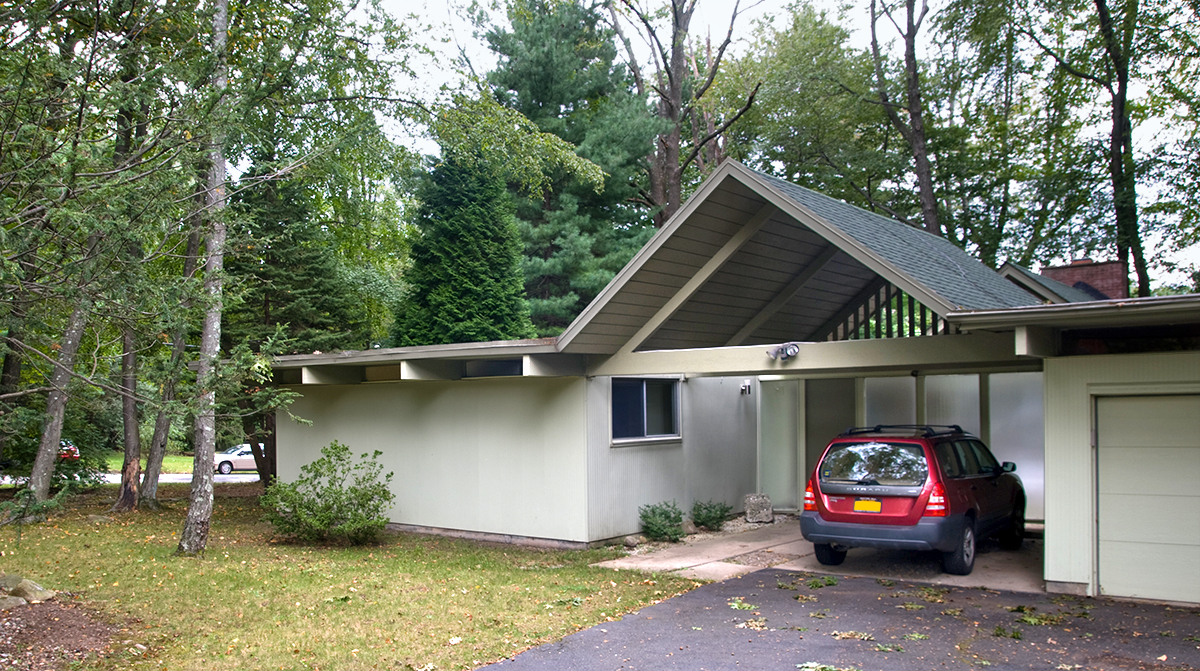 |
“We really wanted an interplay with interior and exterior, which the design of the Eichler allows you,” she says. “You can see the central courtyard and the tree from everywhere you are in the house.”
The remodel, which removed one wall, “was very gentle,” Schaller says, adding, “because [the house] is a work of art, and there's so much history there, and they just don't make them like that anymore.”
“Sometimes I'll decorate [the house used for a film],” she says, “but I always remind people that we design things to be temporary. In this case, we really made an effort to work with the homeowner so that all of our structural major changes would be helpful to him in selling the house in the future.”
The house was recently on the market and may have sold.
Schaller was impressed that each of the three Eichlers was a different model with different features. The crew filmed a bit in another of the New York Eichlers, which is portrayed as a next-door neighbor’s house, as it is in reality.
The Eichlers do not get screen credit, but they have won critical acclaim. The New York Times reviewer called them "swoon-worthy houses with floor-to-ceiling windows and open-floor plans."
“I hope that they stay there,” she says of the Eichlers. “I hope that whoever buys this house, if it hasn't sold already, doesn't just bulldoze it.”
“It was such a delight to design this movie. It really, really was.”
‘After Yang’ is showing at the Smith Rafael Film Center in San Rafael, the landmark Albany Twin in the East Bay, the Alamo Drafthouse Cinema in downtown Los Angeles and The Landmark on West Pico Boulevard.
- ‹ previous
- 578 of 677
- next ›



